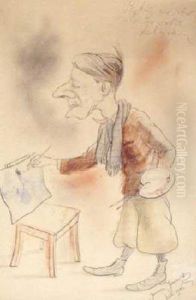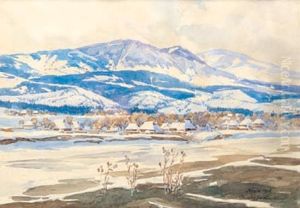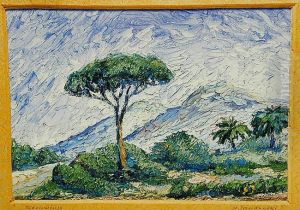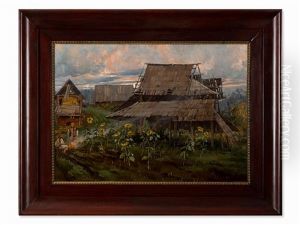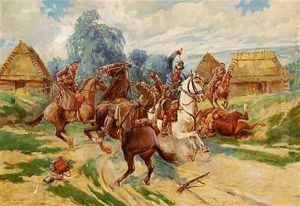Stanislaw Jankowski Paintings
Stanisław Jankowski, also known by his wartime pseudonym 'Agaton', was a Polish architect, urban planner, and a significant figure in the Polish resistance movement during World War II. Born in Warsaw, Poland, in 1911, Jankowski's early years were marked by a burgeoning interest in architecture, leading him to study at the Warsaw University of Technology. His architectural career, however, was interrupted by the outbreak of World War II, during which he played a pivotal role in the Polish Underground State and the Home Army (Armia Krajowa, AK).
Jankowski's contributions to the Polish resistance were multifaceted. He was deeply involved in intelligence operations and the planning of sabotage activities against the German occupation. One of his notable achievements was his participation in Operation Arsenal in 1943, a successful mission to rescue Jan Bytnar 'Rudy', a fellow resistance member, from German custody. Jankowski's skills as an architect were uniquely leveraged during the war; he utilized his expertise to design and construct hiding places for weapons and individuals, as well as to forge German documents, an essential task for resistance operations.
After the war, Jankowski resumed his career in architecture and urban planning, contributing to the reconstruction of Poland, which had been devastated by the conflict. He was particularly involved in the rebuilding of Warsaw, applying his vision of urban development that aimed to preserve historical heritage while accommodating modern needs. His work during the post-war period reflected a commitment to the principles of social realism, which dominated Eastern European architecture at the time, though he later embraced more contemporary architectural trends.
Jankowski's legacy is commemorated in Poland through various honors and awards recognizing his contributions to both the Polish resistance and the field of architecture. Despite the political and social upheavals of his time, he remained dedicated to his dual roles as a patriot and an architect, leaving a lasting impact on the urban landscape of Poland and the history of its resistance movement. He passed away in 2002, leaving behind a remarkable legacy that bridges the worlds of architecture and national heroism.

